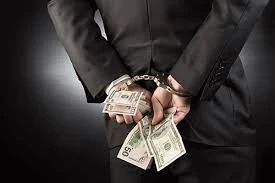White-collar crime refers to nonviolent offenses committed by individuals or organizations in professional or business settings, typically involving financial gain or deceitful practices. Unlike traditional crimes that involve physical harm or violence, white-collar crimes are characterized by deceit, fraud, and manipulation. This article explores various types of white-collar crime, shedding light on their distinct characteristics and implications.
1. Fraud:
Fraud is a broad category encompassing various deceptive practices aimed at unlawfully obtaining financial benefits. This can include securities fraud, insurance fraud, credit card fraud, identity theft, and tax evasion. Perpetrators often exploit trust and misrepresent information to gain illicit profits. Fraudulent activities can have severe economic consequences for individuals, organizations, and society as a whole.
2. Embezzlement:
Embezzlement involves the misappropriation of funds entrusted to an individual in a position of financial responsibility. Employees, executives, or public officials can engage in embezzlement by diverting funds for personal use rather than using them for their intended purpose. Embezzlers manipulate accounting records and cover up their actions, causing significant financial losses to their employers or the public sector.
3. Money Laundering:
Money laundering refers to the process of disguising the origins of illegally obtained funds, making them appear legitimate. Criminals often engage in money laundering to integrate illicit money into the formal economy, making it difficult for authorities to trace the funds back to their illegal activities. This process typically involves three stages: placement, layering, and integration, which aim to obscure the source of the funds.
4. Insider Trading:
Insider trading involves the illegal buying or selling of stocks or securities based on non-public, material information. This practice undermines the fairness and integrity of financial markets by giving individuals unfair advantages over other investors. Perpetrators, typically corporate insiders or individuals with privileged access to confidential information, exploit their positions to make substantial profits at the expense of unsuspecting investors.
5. Intellectual Property Theft:
Intellectual property theft refers to the unauthorized use, reproduction, or distribution of intellectual property, such as patents, trademarks, copyrights, or trade secrets. This crime is particularly prevalent in industries reliant on innovation and creativity. Perpetrators may engage in counterfeiting, piracy, or industrial espionage to obtain valuable intellectual property, resulting in financial losses and reputational damage to the rightful owners.
6. Bribery and Corruption:
Bribery and corruption involve offering, giving, receiving, or soliciting something of value to influence the actions of an individual in a position of power or authority. This crime undermines fair competition, compromises public trust, and distorts decision-making processes. Bribery can occur in various contexts, including business transactions, government contracts, or public service.
7. Cybercrime:
With the rapid advancement of technology, white-collar crime has expanded into the digital realm. Cybercrime encompasses a wide range of criminal activities conducted through electronic means, such as hacking, phishing, identity theft, ransomware attacks, and data breaches. Cybercriminals exploit vulnerabilities in computer systems and networks to gain unauthorized access, steal sensitive information, or extort individuals or organizations.
Conclusion:
White-collar crime represents a significant challenge in contemporary society, with far-reaching economic, social, and ethical implications. The types of white-collar crime discussed in this article are just a few examples of the various fraudulent activities that occur in professional settings. Understanding these nuances is crucial for developing effective prevention strategies, promoting corporate ethics, and ensuring the integrity of financial systems. Combating white-collar crime requires collaboration between law enforcement agencies, regulatory bodies, and businesses to detect, investigate, and prosecute offenders, ultimately safeguarding the interests of individuals and society as a whole.


